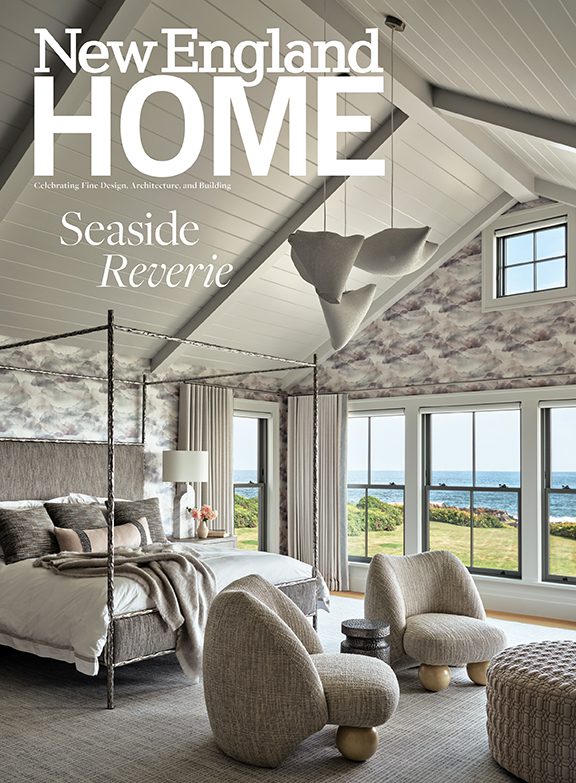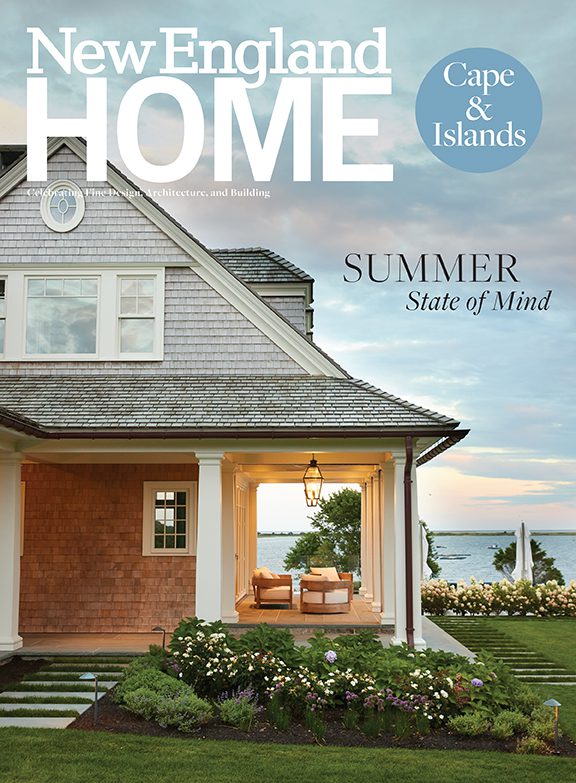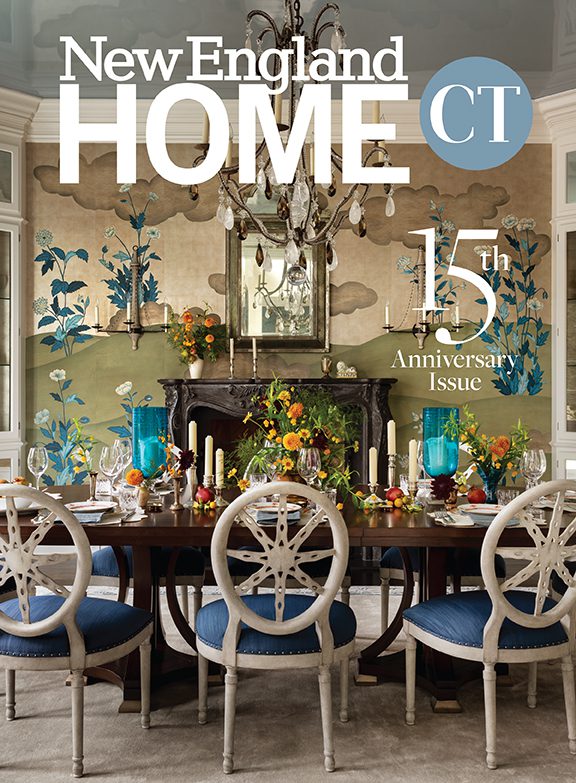Moody Blues
November 13, 2012
Text by Regina Cole Photography by Laura Moss
In a space that feels simultaneously romantic and subtle, sexy and serene, Tiffany Eastman demonstrates graceful solutions to at least two Herculean design challenges. In a northern climate, she created a decor based on blues and grays that is anything but cold. And she executed her plan within the rigid limitation caused by the elevator that opens to the living room of this 1930s brownstone apartment in a downtown Greenwich historic district. “The elevator measures eighty-four inches, so the sofa is eighty-three and a half inches long, and so is the big mirror in the living room,” the designer says. “You sacrifice,” she adds, noting that every project brings its unique constraints.
Sacrifice is not the word that comes to mind upon entering the 2,500-square-foot, three-bedroom condominium. Rather, the overwhelming impression is of calm, deeply self-aware feminine elegance. In fact, the sophisticated interior Eastman created is so perfectly on target it’s hard to believe that the last time she collaborated with this client, the end result looked very different (though no less striking).
Back then, the Stamford interior designer worked with another firm. Just before Eastman went off on her own, the client came for help with a large, colonial-style center-entry house in the western part of the state. “Her life was different then,” Eastman recalls. “The big colonial reflected her lifestyle when she worked in the finance industry.”
Some two years later, the homeowner left her job on Wall Street and traded her big suburban house for an apartment closer to the city. Her new quarters called for a different look and feel altogether, but, says Eastman, “She reached out to me because she knew that she and I are on the same page aesthetically. She wanted a chic, more contemporary flair.”
In the client’s previous house, beige dominated the palette. For her new home, the designer says, “She told me she wanted a cool palette, and that she loved blue.”
Often topping the list of beloved colors, blue can bring a chill to rooms in our New England climate. “Blues don’t have to be cold,” Eastman explains. “It comes down to layering and the textures of all the fabrics. We used five different blues and grays in the living room, from the ice-blue sofa upholstery to the charcoal-gray carpet. Gold warms in curtain rods and accessories here, as well as in the bedroom, dining room and sunroom.”
The key, she continues, is in imbalance: “The composition should be slightly left of center, not equally balanced. Textures, tones, warmth and cold: the imbalance is where the magic happens.”
The dining room, for example, murmurs in the subtle languages of sophistication, mystery and romance, with charcoal-gray Venetian plaster walls, modern nickel sconces, a clean-lined glass chandelier and an antique Sheraton sideboard. Curtain rods, a Napoleonic ormolu clock and the sideboard’s original brass hardware provide just enough warmth to spark Eastman’s off-center juxtaposition. “She wanted dark, sexy,” the designer says. “In dining rooms, we can take more risks, so we chose this wall treatment. Venetian plaster done in soft, dark colors is stunning. We incorporated mica into the mix for a bit of shine, then finished with a top layer of wax. The result is dramatic and subtle at the same time.”
She points to the gray metallic mesh draperies and metallic chair fabric. “They don’t read metallic, but they add to the subtle shimmer.”
The sensibility, she says, was inspired by the painting above the Sheraton sideboard, which the homeowner brought from her previous house. “Those whites and grays—that’s the mystery and nuance we wanted.”
The sideboard is one of a handful of pieces that made the move. “She had sentimental attachments to various pieces but didn’t hang on to anything that didn’t work,” Eastman says of her client. “We handpicked and edited.”
The atmospheric space of the dining room opens into the calmly chic living room, where charcoal-gray accents echo the dining room’s dark wall color. Here, too, Eastman incorporated another classic antique from the owner’s previous home. “The juxtaposition of the tall clock to one side of the doorway and the large abstract painting on the other side strikes the right note,” she explains, adding that the rich wood tones and neoclassical ornamentation of the statuesque clock bring unexpected zing to a clean-lined, modern composition.
The dining and living rooms reflect in the large mirror ensconced on an Eastman-designed stand. “We placed this very traditional, classic French frame with metal leaf onto a squared-off base sprayed with softly metallic paint,” she says. “That gives it a more contemporary look and makes the mirror look like artwork.”
The mirror flanks the entry to the sunroom, which overlooks a lovely congregation of steeples on Greenwich Avenue. Beyond lies Long Island Sound, and on a clear night the lights of Manhattan shine in the distance. “There is no way to dress the windows, but I am a firm believer in framing a room, so we put sheers on the only wall,” Eastman explains. “They never close; the homeowner loves the sexiness of the way they flow as one walks into the living room.”
Eastman’s deft touch shines throughout the home. In the master bedroom, gray strié walls seem to make the room float. Even the functional kitchen has a romantic side, with a breakfast table whose mirrored base was adapted from a Regency torchiere.
Does this Zen elegance represent the designer’s own signature? “I do believe that a designer has a look,” she says. “But,” she hastens to add, “the look that matters is the client’s, not the designer’s. In the end, she is the one who returns home in the evening, and when she turns the key, I’m not there.”
Eastman may be gone, but her work has left an indelible impression. •
Interior design: Tiffany Eastman
Builder: Rob Zarzuela
Share
![NEH-Logo_Black[1] NEH-Logo_Black[1]](https://b2915716.smushcdn.com/2915716/wp-content/uploads/2022/08/NEH-Logo_Black1-300x162.jpg?lossy=1&strip=1&webp=1)

















You must be logged in to post a comment.